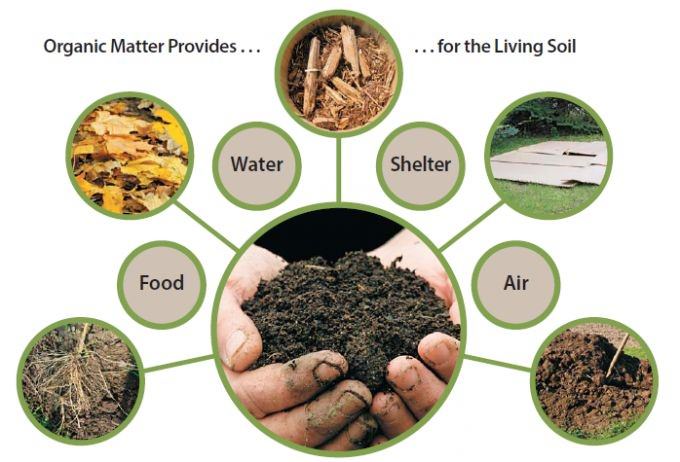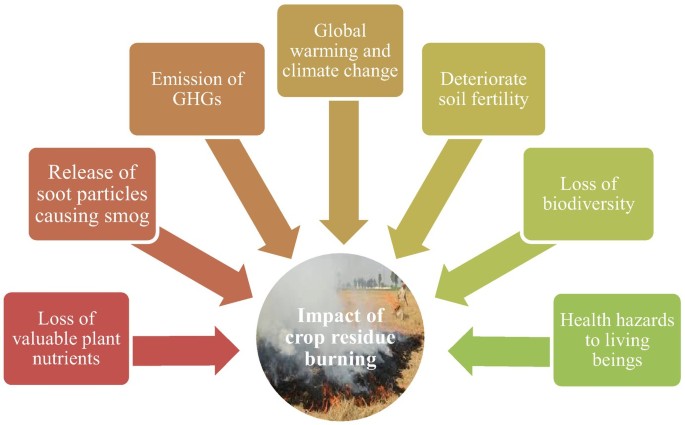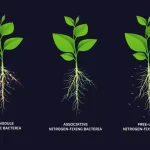Have you ever wondered how the remnants of last season’s harvest can breathe new life into your soil? The effects of crop residue on soil fertility might just be the secret ingredient your farm or garden needs.
Imagine unlocking the full potential of your land, effortlessly boosting its productivity and health, all while doing something as simple as leaving a layer of organic matter behind. Curious about how this works and what it could mean for your crops?
You’ll want to read on, because this could transform the way you think about soil care and sustainability. Let’s dig into how these natural leftovers can turn your soil into a thriving, fertile powerhouse.
Benefits Of Crop Residue
Crop residue plays a vital role in enhancing soil fertility. These remnants of harvested crops, such as stalks and leaves, offer numerous benefits. They enrich the soil, improve its structure, and aid nutrient retention. Understanding these benefits helps farmers maintain productive and healthy land.
Improved Soil Structure
Crop residue boosts the soil’s physical structure. It increases organic matter, which enhances soil aggregation. Aggregated soil is less prone to erosion and compaction. This creates a more conducive environment for plant roots to thrive.
Enhanced Nutrient Retention
Residue helps in nutrient retention by acting as a natural mulch. It reduces nutrient runoff and loss. This ensures essential minerals remain within the soil, promoting healthy plant growth.
Increased Water Holding Capacity
Crop residue improves the soil’s ability to retain water. Organic matter from residue increases soil porosity. This allows water to penetrate deeper, ensuring plants receive sufficient moisture even during dry spells.
Weed Suppression
Residue acts as a physical barrier against weeds. It covers the soil surface, limiting sunlight and space for weed growth. This reduces the need for chemical herbicides, promoting eco-friendly farming practices.
Support For Soil Microorganisms
Residue fosters a thriving environment for soil microorganisms. These microorganisms play a crucial role in nutrient cycling. They break down organic matter, releasing nutrients essential for plant growth.

Nutrient Enrichment
Crop residue boosts soil fertility by adding essential nutrients. These residues enhance soil structure, promoting better water retention. They also increase microbial activity, leading to improved nutrient cycling.
Nutrient enrichment through crop residue is a powerful way to boost soil fertility. By leaving the leftover parts of crops, like stems and leaves, on the field after harvest, you can naturally enhance the nutrient content of your soil. This practice not only enriches the soil but also supports sustainable farming practices that benefit both you and the environment.Understanding Nutrient Contributions
Crop residues are a treasure trove of nutrients. As they break down, they release essential elements such as nitrogen, phosphorus, and potassium back into the soil. These are the same nutrients that plants need to grow strong and healthy. Think of it like a natural fertilizer that’s already in your field.Benefits Of Nutrient Recycling
Recycling nutrients through crop residue reduces the need for chemical fertilizers. This can save you money and reduce potential environmental harm. Additionally, nutrient recycling helps maintain soil structure, making it easier for roots to penetrate and absorb nutrients.Impact On Soil Organic Matter
When residues decompose, they increase organic matter in the soil. This improves soil texture and water retention. Healthy soil retains more moisture, which can be a lifesaver during dry spells. It’s like giving your soil a sponge to hold onto water.Practical Tips For Effective Use
To maximize benefits, evenly spread crop residue across the field. Consider chopping or shredding larger residues to speed up decomposition. Rotate crops to vary the type of residue and nutrients returned to the soil. Have you ever noticed how diverse your garden gets when you mix things up a little?Challenges And Considerations
While beneficial, crop residue management requires attention. Too much residue can lead to pest issues or slow planting. Balancing residue with other farming practices ensures a thriving crop and soil health. Do you have a strategy in place to manage these challenges? Engaging with the natural nutrient cycle can transform your farming approach. By focusing on nutrient enrichment through crop residues, you’re investing in long-term soil health and productivity. Isn’t it exciting to think of the potential your field holds with just a few simple changes?Soil Structure Improvement
Crop residues play a crucial role in soil structure improvement. These residues cover the soil surface. They prevent erosion and compaction. This leads to better soil health. Good soil structure means better root growth. It also allows better water and air movement.
How Crop Residues Enhance Soil Aeration
Crop residues create spaces in the soil. These spaces improve air movement. Roots need oxygen to grow. More air means healthier roots. Healthy roots improve plant growth.
Water Infiltration And Retention
Residues improve water infiltration. Water enters the soil easily. It reduces water runoff. This helps in retaining moisture. Moist soil supports plant growth.
Soil Compaction Reduction
Residues on the surface stop soil compaction. Compacted soil is hard and dense. Roots struggle to grow in such soil. Residues keep the soil loose and soft. This promotes better root expansion.
Organic Matter Contribution
As residues decompose, they add organic matter. This improves soil structure. Organic matter enhances nutrient availability. It supports microbial activity. Active microbes break down nutrients for plants.
Enhanced Root Penetration
Improved soil structure aids root penetration. Roots can access nutrients easily. Better root growth leads to stronger plants. Strong plants produce better yields.
Sustainable Farming Practices
Crop residue enriches soil by adding organic matter, enhancing water retention. It provides essential nutrients, improving soil fertility. These practices promote sustainable farming, benefiting crop yield and the environment.
Sustainable farming practices are transforming how we approach agriculture. These practices prioritize the health of the ecosystem, ensuring that farming activities do not deplete resources but rather sustain them for future generations. One significant aspect of sustainable farming is the management of crop residue, which plays a crucial role in maintaining soil fertility.What Is Crop Residue?
Crop residue refers to the plant materials left in the field after harvest, such as stalks, leaves, and roots. This residue can either be removed or left to decompose naturally. Leaving it on the field is a smart choice for sustainable farming. It acts like a natural fertilizer, slowly releasing nutrients as it breaks down.The Role Of Crop Residue In Soil Fertility
Crop residue boosts soil fertility by adding organic matter. This improves soil structure, allowing roots to access water and nutrients easily. It also helps in retaining moisture in the soil, reducing the need for frequent irrigation.Benefits Of Leaving Crop Residue
Leaving crop residue on the field has several benefits: – Nutrient Cycling: As residue decomposes, it returns essential nutrients to the soil, like nitrogen and phosphorus. – Erosion Control: It acts as a protective layer, preventing soil erosion by wind and water. – Weed Suppression: Residue can suppress weed growth, reducing the need for chemical herbicides.Practical Steps For Managing Crop Residue
Managing crop residue effectively requires some simple actions: 1. Assess Your Field: Determine the amount of residue your crops produce and its potential benefits for your specific soil type. 2. Choose Appropriate Equipment: Use tools like no-till drills that plant seeds through the residue without disturbing it. 3. Monitor Decomposition: Keep an eye on how quickly the residue breaks down to adjust your planting schedules accordingly.Real-life Experiences With Crop Residue
Farmers who have embraced this practice often share their successes. One farmer mentioned that leaving crop residue improved their soil’s resilience during dry seasons. This simple act not only enriched their soil but also cut down their reliance on synthetic fertilizers.Challenges And Considerations
Leaving crop residue isn’t without challenges. It can harbor pests or diseases if not managed properly. Are you willing to experiment with different strategies to find what works best for your farm? Balancing these challenges with the benefits can lead to more sustainable farming practices. Sustainable practices like managing crop residue can lead to healthier soils and more productive fields. Isn’t it time you considered how these practices could benefit your farm?
Conclusion
Crop residue plays a vital role in soil health. It improves soil fertility by adding nutrients. Organic matter from residue boosts soil structure. This enhances water retention and reduces erosion. Farmers benefit from better crop yields. Healthy soil supports plant growth.
It’s an eco-friendly practice that reduces waste. Utilizing crop residue is a smart choice. It sustains agriculture for future generations. Soil becomes more resilient to climate changes. Embracing this practice helps maintain soil productivity. A simple yet effective way to nurture the earth.



